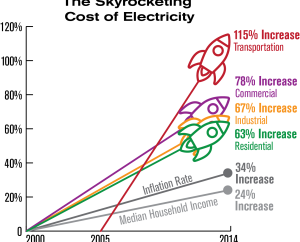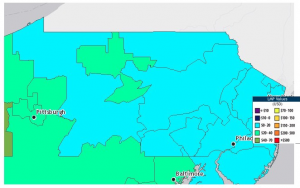Batteries will have a similar effect but need to be treated separately. The reason why the south/west facing system produces less energy than the south facing set is that the sun is cold in the east and in the south, so the panel facing WEST underperform because they don’t earn the same amount. of sunlight compared to only southern exposure. But in summer, the WEST conversion uses additional power in the length (KW) to compensate for the cold loss and this gives the GRID more KW power Cirro Energy Rates during peak hours and longer in the evening. WEST’s guidance will also help reduce some of California’s most well-known threats to ducks that are currently occurring in California. Some California utilities are starting to encourage these types of hybrid solar systems in an effort to find a better solar energy mix and balance of benefits for the parties.
Depending on the lifestyle, a solar operator with some training can export higher power levels into the GRID during peak times and earn more money per KWhr, thus recovering the initial losses. These south/west hybrid systems can reduce generation, transmission, and distribution costs for infrastructure, helping to reduce future costs. This provides strategic value for all customers. This is one of the ways to distribute solar energy that can be helpful for managing and delivering loads when utilities need it. These can be WIN-WIN for all involved. and advancing the transition to a cleaner future.

When it comes to solar systems for commercial roofs, it works well with systems that face EAST and WEST as they are installed on the roofs of existing buildings. These systems will also generate additional KW energy production during peak hours and longer periods in summer evenings. They will reduce the need for use by the solar hosting provider and thus provide more money in the electricity bill, as the business market has a high demand for debt, and these systems reduce the share of about 26% more debt required than a south-facing system only. They can also feature a design that allows a home installation to receive more solar kW per square foot of roof space compared to just facing south.
You will get more watts per square foot because the east/west orientation increases the energy density; so there is more value. You lose it in the winter but you get it during peak hours and that’s when the customer needs it to reduce demand on their air conditioning system. These systems can increase solar penetration in commercial spaces while reducing peak demand (KW), which increases the return on investment and energy savings compared to south-facing systems. There are many opportunities for utilities, solar providers, and consumers looking to take advantage of these new features.
The transition to a clean energy future requires a high level of collaboration between many different people. Progress is hindered if organizations stand only for their own selfish positions or when companies try to remain in a monopolistic SILO position and resist a positive response to new technologies and the new challenges and opportunities they present. – bring More work needs to be done and we need good advice from our service providers and more input from the public so that consumers are respected in these options.

